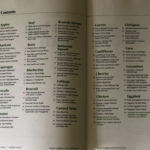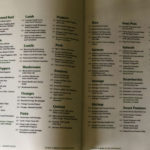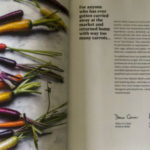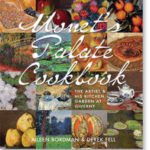People often think gelato and ice cream are the same, however, the processes and ingredients are different. Essentially, gelato contains about 20-30% air incorporated to the base, while ice cream holds about 50% air. In Italy, gelato making varies significantly from region to region. A typical gelato base from the south of Italy is made mostly with whole milk, dry powder milk, light corn syrup and lower percentage of cream than ice cream. The total content of fat in gelato is around 4 to 9% while the ice cream fat content is around 14-25%. Due to the lower fat content and the percentage of air incorporated in the emulsion, the gelato is lighter, smother and creamier than ice cream. Also, lower fat content intensifies the flavor of the gelato. Another difference between gelato and ice cream is that egg yolks are an important ingredient of the base of ice cream, while in gelato, egg is used for flavor. Morano says “an authentic gelato rarely contains egg yolks. If we use them is just for a bit of flavor.”
In addition, storage and serving temperatures are different between ice cream and gelato. Ice cream is usually stored at 10°F, while gelato is store around 25°F. The higher serving temperature of gelato helps to attain the perfect consistency, mouth feel and helps to taste better the flavors and sweetness of the product. If stored at ice cream temperature, the gelato turns into a “concrete block and decreases the flavor intensity. Ideally, the gelato is served with a spoon known as “spade.” The spade is flatter than the ice cream scoop and helps to scoop the gelato without disturbing most of the rest of the product in the container.
Over the month, I sampled the same flavor three or more times. Each flavor of sorbet and milk-based gelato I tasted consistently presented defined flavors, same colors, and creamy textures through the whole month of July 2018, a hot-muggy one in New England. In general, I can say that all gelatos have a distinctive-balanced dairy flavor. I did not feel any excess of dairy fat or dairy-cooked flavors or egg. Neither could I feel the smell or flavor of powder milk. The proportions of sugar/fruits or other flavors were very well balanced. All flavors and colors were very defined, as well as the textures of the different gelatos. I was very impressed with the delicate balance achieved in gelatos using sea salt, as an example, caramel and chocolate. All the fruit-based gelato I tried had a taste of fresh-ripe fruit. Overall, the spectacular mouth feel (time from the moment the gelato touches your tongue, to the moment the gelato is swallowed) awakes all taste buds.
By the end of our visit to Hanover, I tested pretty much all flavors offered at the shop. There were about 12 to 16 flavors, made daily with fresh ingredients. Some of my favorite flavors were: Cioccolato Fondente, Bacio (Chocolate-Hazelnut “Kiss”), Gianduja (Dark Chocolate-Hazelnut), Lampone, Limone, Pompelmo, Kiwi, Fior di Latte, Caffè, Crema Fiorentina (Vanilla Custard with Citrus), Pistacchio (Sicilian Bronte Pistachio) and the iconic Straciatella. Don’t panic, all gelatos also have English’s translations.
Three or more times per week, I ate my scoop or cone at the store, and carried home containers with two or three flavors. I was very pleased to see how well the gelato held the texture, even under the scorching sun of summer after walking with the gelato six blocks away, just a little blue ice under the cardboard container. The gelatos were always creamy, without presence of large ice crystals, or sandy texture. That said, after storing Morano Gelato in the regular home freezer for more than a day, the product turned hard and more difficult to scoop than the fresh product.
The parlor is spacious, vibrant, modern, very clean and well illuminated. Friendly crew helps the folks waiting on line, and patiently gave the patrons, a few requested spoons of the unique flavors offered that day. The gelato is beautifully displayed, decorated with the swirls formed when filling the containers and, in some cases, a little bit of a fruit on top of each container.
I am very inspired by this young-hard working and creative entrepreneur, with a passion for gelato, discipline and vision. Additionally, knowing that Morgan Morano started her business at the Norwich Farmers Market (mentioned in previous posts), and that Morano supports local farmers and business, made every walk to her store a double treat.
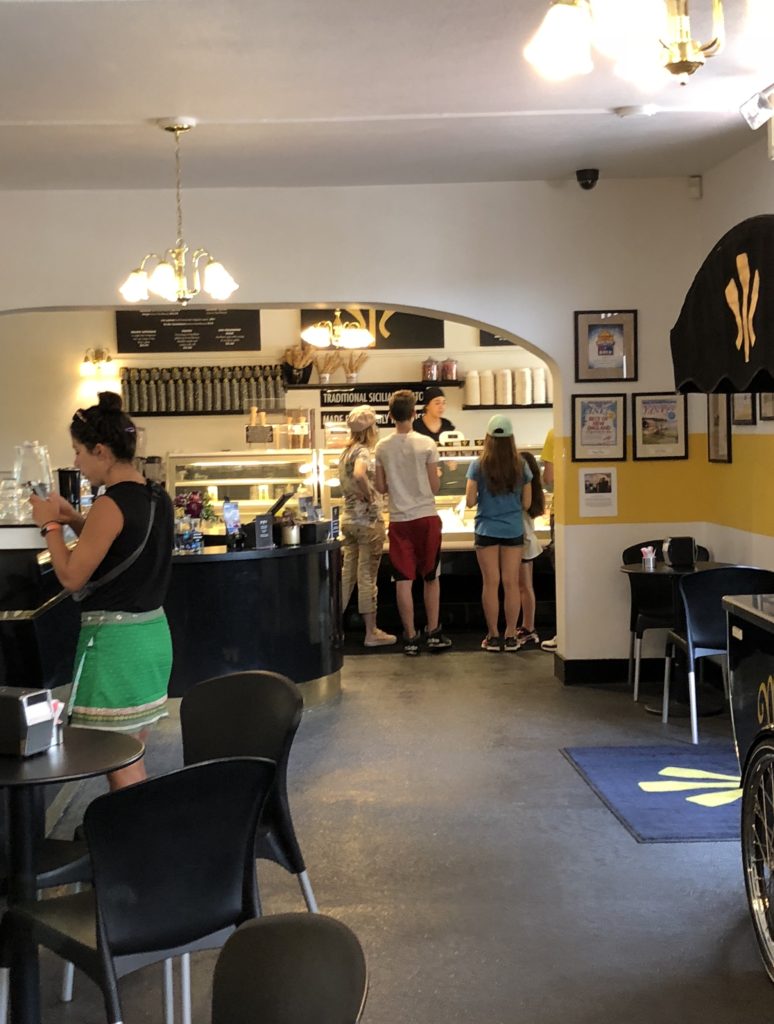
If you cannot make it soon to any of her stores, look for Morgan Morano book The Art of Making Gelato, 50 flavors to make at home. I’ll write about the recipes later. Meanwhile I am waiting for my tapioca starch and light corn syrup to arrive.
Boston Globe Interview with Morgan Morano
89.7 Listen Live: Local Boston NPR




